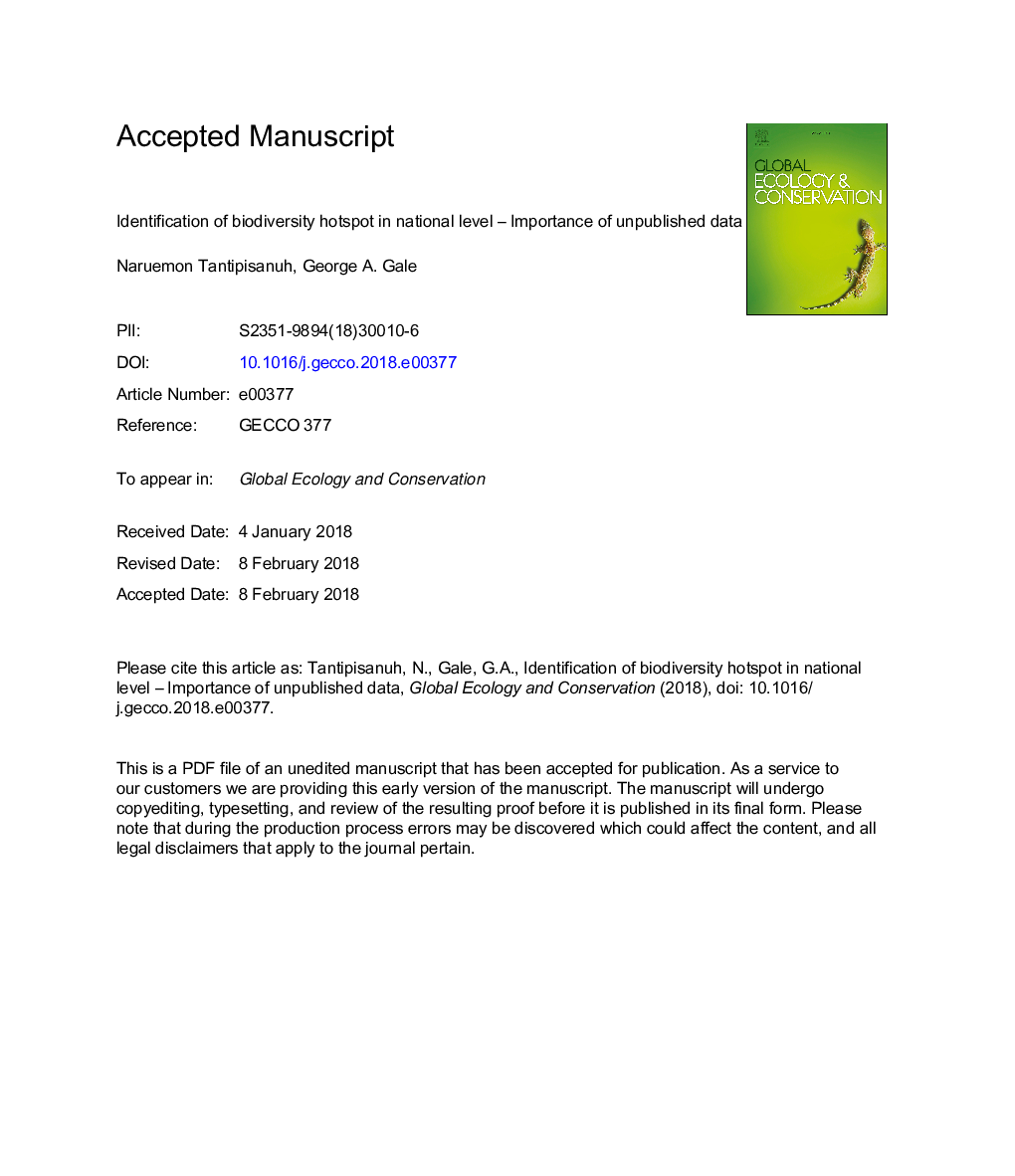| Article ID | Journal | Published Year | Pages | File Type |
|---|---|---|---|---|
| 8846228 | Global Ecology and Conservation | 2018 | 45 Pages |
Abstract
High priority areas for conservation are typically identified based on ad hoc methods without supporting data due to a lack of scientific resources and staff. The objective of this study was to show how unpublished data in combination with citizen science can be useful for identifying biodiversity hotspot areas using Thailand as an example. Species records were aggregated from various sources both published (records permanently archived or temporarily available on the internet) and unpublished data (derived from interviews). Data from 2001 to 2016 were used to identify hotspot areas. In total, 15% of the data were obtained from personal interviews. Most Thai hotspot areas were already inside government protected areas. Amphibians and reptiles were the taxa that unpublished data had the greatest influence on hotspot identification, while this influence was least for birds. Spatial coverage of species records showed a bias toward particular regions and areas probably due to a number of factors including their international reputation and previous species records. Results from this project reveal the importance of unpublished records as a source for identifying hotspot locations especially for less studied species groups and indicates the continued need for encouraging scientists as well as amateur naturalists to report their observations to archived websites and/or publish in peer-reviewed journals.
Related Topics
Life Sciences
Agricultural and Biological Sciences
Ecology, Evolution, Behavior and Systematics
Authors
Naruemon Tantipisanuh, George A. Gale,
